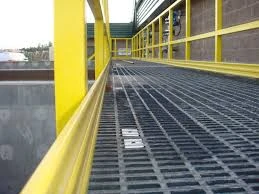
-
 Afrikaans
Afrikaans -
 Albanian
Albanian -
 Amharic
Amharic -
 Arabic
Arabic -
 Armenian
Armenian -
 Azerbaijani
Azerbaijani -
 Basque
Basque -
 Belarusian
Belarusian -
 Bengali
Bengali -
 Bosnian
Bosnian -
 Bulgarian
Bulgarian -
 Catalan
Catalan -
 Cebuano
Cebuano -
 China
China -
 China (Taiwan)
China (Taiwan) -
 Corsican
Corsican -
 Croatian
Croatian -
 Czech
Czech -
 Danish
Danish -
 Dutch
Dutch -
 English
English -
 Esperanto
Esperanto -
 Estonian
Estonian -
 Finnish
Finnish -
 French
French -
 Frisian
Frisian -
 Galician
Galician -
 Georgian
Georgian -
 German
German -
 Greek
Greek -
 Gujarati
Gujarati -
 Haitian Creole
Haitian Creole -
 hausa
hausa -
 hawaiian
hawaiian -
 Hebrew
Hebrew -
 Hindi
Hindi -
 Miao
Miao -
 Hungarian
Hungarian -
 Icelandic
Icelandic -
 igbo
igbo -
 Indonesian
Indonesian -
 irish
irish -
 Italian
Italian -
 Japanese
Japanese -
 Javanese
Javanese -
 Kannada
Kannada -
 kazakh
kazakh -
 Khmer
Khmer -
 Rwandese
Rwandese -
 Korean
Korean -
 Kurdish
Kurdish -
 Kyrgyz
Kyrgyz -
 Lao
Lao -
 Latin
Latin -
 Latvian
Latvian -
 Lithuanian
Lithuanian -
 Luxembourgish
Luxembourgish -
 Macedonian
Macedonian -
 Malgashi
Malgashi -
 Malay
Malay -
 Malayalam
Malayalam -
 Maltese
Maltese -
 Maori
Maori -
 Marathi
Marathi -
 Mongolian
Mongolian -
 Myanmar
Myanmar -
 Nepali
Nepali -
 Norwegian
Norwegian -
 Norwegian
Norwegian -
 Occitan
Occitan -
 Pashto
Pashto -
 Persian
Persian -
 Polish
Polish -
 Portuguese
Portuguese -
 Punjabi
Punjabi -
 Romanian
Romanian -
 Russian
Russian -
 Samoan
Samoan -
 Scottish Gaelic
Scottish Gaelic -
 Serbian
Serbian -
 Sesotho
Sesotho -
 Shona
Shona -
 Sindhi
Sindhi -
 Sinhala
Sinhala -
 Slovak
Slovak -
 Slovenian
Slovenian -
 Somali
Somali -
 Spanish
Spanish -
 Sundanese
Sundanese -
 Swahili
Swahili -
 Swedish
Swedish -
 Tagalog
Tagalog -
 Tajik
Tajik -
 Tamil
Tamil -
 Tatar
Tatar -
 Telugu
Telugu -
 Thai
Thai -
 Turkish
Turkish -
 Turkmen
Turkmen -
 Ukrainian
Ukrainian -
 Urdu
Urdu -
 Uighur
Uighur -
 Uzbek
Uzbek -
 Vietnamese
Vietnamese -
 Welsh
Welsh -
 Bantu
Bantu -
 Yiddish
Yiddish -
 Yoruba
Yoruba -
 Zulu
Zulu
efficient pdc anchor drill bits for high-performance drilling ...
Efficient PDC Anchor Drill Bits for High-Performance Drilling
In the ever-evolving drilling industry, the quest for efficiency and performance has become paramount. One of the tools at the forefront of this innovation is the Polycrystalline Diamond Compact (PDC) anchor drill bit. These specialized bits are designed to meet the demanding requirements of high-performance drilling applications, particularly in challenging geological environments.
PDC drill bits are renowned for their durability and efficiency, making them the preferred choice for many drilling engineers. Their unique construction features synthetic diamonds arranged on a tungsten carbide substrate. This advanced design allows the bits to maintain their cutting edges longer than traditional steel bits, significantly reducing the frequency of bit changes and downtime. Consequently, this translates into lower operational costs and increased productivity.
One of the key advantages of PDC anchor drill bits is their ability to drill through tough formations with less energy consumption. The bits are engineered to maintain a consistent rate of penetration (ROP), which is crucial for optimizing drilling efficiency. By minimizing the energy wasted on excessive vibration and torque, PDC bits provide a smoother drilling experience, enabling companies to achieve their goals faster and with fewer resources.
Moreover, the versatility of PDC bits is noteworthy. They can be tailored for various applications, from drilling deep wells for gas and oil extraction to geological explorations. Different configurations can optimize performance depending on the specific requirements of the drilling site. This adaptability allows operators to maximize their investment by employing a single type of bit across multiple projects, leading to more seamless operations.
efficient pdc anchor drill bits for high-performance drilling ...

In high-performance drilling applications, the efficiency of a drill bit directly impacts the overall success of a project. PDC anchor bits exhibit excellent wear resistance, which is essential when navigating abrasive and hard rock formations. Their cutting structures are less prone to chipping, enabling precise drilling without compromising the integrity of the bit. Consequently, operators can enjoy longer run times and minimized tool replacement intervals.
The technological advancements in PDC bit manufacturing have also improved their hydrodynamic properties. Enhanced cooling systems within the bits help to dissipate heat generated during drilling, thus prolonging their life span and ensuring consistent performance. This design consideration is critical, especially in high-temperature environments where overheating can lead to premature bit failure.
Furthermore, the environmental impact of drilling operations cannot be overlooked. The efficiency of PDC anchor drill bits contributes to more sustainable practices by reducing the energy needed for drilling operations. As companies face increasing pressure to lower their carbon footprints, the adoption of efficient drilling technologies like PDC bits offers a viable path toward achieving these goals.
In conclusion, the evolution of PDC anchor drill bits represents a significant leap forward in high-performance drilling technology. Their durability, versatility, and efficiency make them an indispensable tool in the drilling industry. As the demand for efficient and sustainable practices grows, the role of PDC bits will undoubtedly expand, paving the way for innovations that push the boundaries of what is possible in drilling operations. Adopting these advanced tools not only enhances productivity but also ensures a lower environmental impact, aligning with modern industrial standards and expectations.









